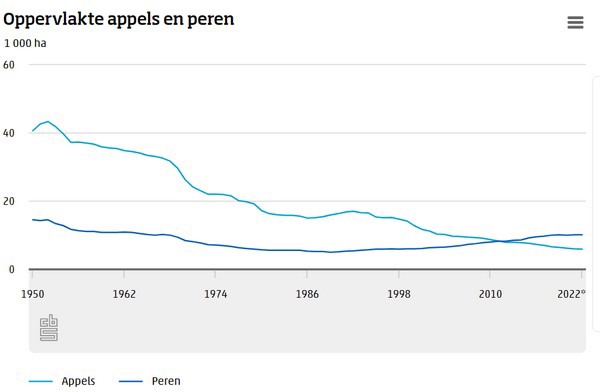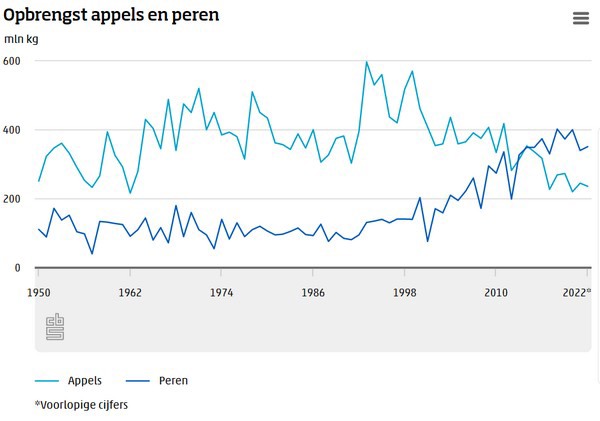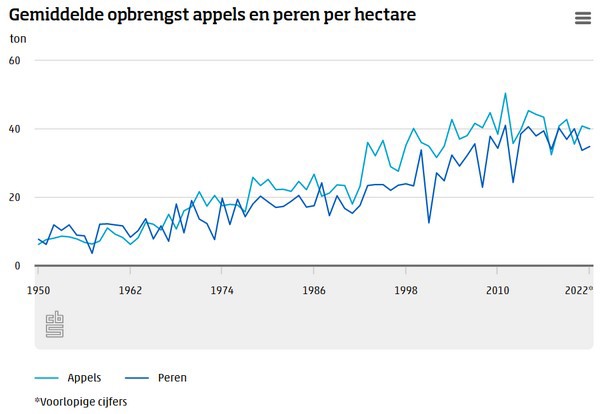The Netherlands has 85% less apple acreage than in 1950. For pears, acreage fell by one-third from 1950 to 2022. Apple acreage exceeded that of pears for a long time, but that changed in 2012. In 2022, apple yields were six percent lower than in 1950, while pear yields more than tripled over the same period. That is according to the CBS's new agricultural dashboard.

Apple and pear acreage
In 1950, 406,000 hectares of agricultural land were used for apple cultivation and 145,000 hectares for pears. The apple acreage has been decreasing since then. In 2022, apples were grown on 59,000 hectares. Pear acreage also decreased until the late 1980s. Since the early 1990s, that acreage has recently increased and stabilized at around 10,000 hectares.
The CBS has been tracking apple and pear growers' acreage since 1980. That year, Dutch apple growers had an average orchard of 3.4 hectares; in 2022, it was 6.5 hectares. Pear growers' average acreage grew from 1.3 to 8.7 hectares.
In fruit cultivation, the emphasis had long been on apples, but since 2012, that has shifted to pears. The leading causes were international competition in the apple market and weather changes, like fewer frosty nights.
Higher apple and pear yields
Despite the decreased apple acreage, in 1993, production in the Netherlands reached a record 597 million kilograms. Since the beginning of this century, that yield has declined due to the lower acreage. In 2022, growers harvested 236 million kilograms of apples.
Before 2000, pear yields remained mostly under 150 million kgs but rose after that. In 2022, 351 million kilograms of pears were harvested.

Apple and pear yields
Higher hectare yields
The yield per hectare for both Dutch apples and pears is higher, thanks partly to specialization and upscaling. With specialization, the grower focuses on one or two types of fruit. In 1950, apples' hectare yield was more than six tons and of pears almost eight. By 2022, that had grown to 40 and nearly 35 tons, respectively.
Those higher hectare yields are due to cultivation improvements. For example, low-trunk orchards replaced high-trunk ones, making harvests more efficient. Also, higher-yielding apple and pear varieties were developed. Weather conditions such as frost, hail, and a wet spring considerably impact apple and pear production. That can greatly affect annual production.

Average apple and pear per hectare yields
Source: CBS










